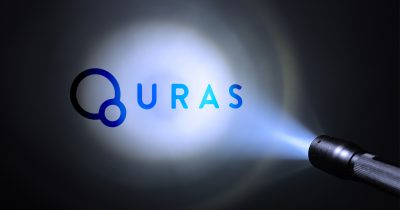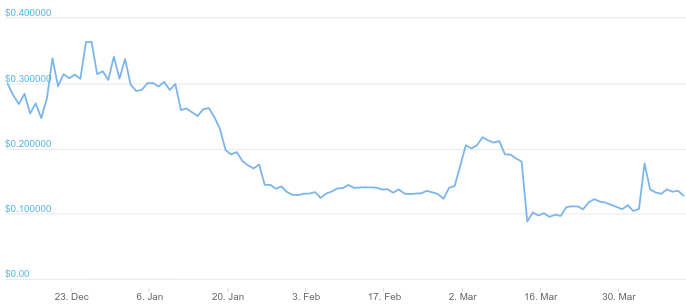What Is QURAS? Introduction to XQC
QURAS allows developers to create smart contracts that handle data privately. The project began in 2017 with the intent to secure healthcare data, but since then, it has greatly expanded its focus.

Key Takeaways
- The Quras blockchain offers private smart contracts and transactions.
- The platform competes with programmable blockchains, like Ethereum.
- It also offers 1000 TPS, transaction fee sharing, and staking rewards.
Share this article
QURAS is a blockchain that allows users and developers to create smart contracts, custom tokens, and transactions in a way that keeps all data private and hidden.
The project began in 2017 with the goal of providing secure storage for healthcare data, but since then, it has shifted its focus toward serving developers in virtually all areas.
XQC Token Summary
QURAS initially raised capital through private investors in 2018, raising somewhere around $14 million. QURAS first listed its XQC token on Bithumb Global in mid-October 2019. Today, XQC is available to general investors on three exchanges: Bithumb Global, CoinTiger, and Biki.
As of April 2019, XQC has a daily volume of $1.8 million and is priced at $0.14. Since QURAS has not yet launched its mainnet at the time of this writing, the value of XQC is likely to fluctuate, and it may be some time before market aggregators give the token a clear ranking.

The XQC token is aimed at developers who want to create in-app transactions. General users can also hold XQC to earn staking rewards, or spend it on payments.
Secret Smart Contracts
Privacy coins like Monero and Zcash give users a way to hide transaction details, while blockchains like Ethereum give developers a way to program smart contracts with automated transactions.
QURAS combines those two features, offering private programmable contracts on one platform.
This means that, for any given transaction or contract, only involved parties can view information about that transaction or contract. Encryption techniques allow the QURAS blockchain to verify and ensure the integrity of that data without actually revealing any of that data.
Developers who use QURAS can also create their own privacy tokens, combine private transactions with public smart contracts, or use completely transparent transactions and smart contracts.
QURAS Mainnet Launch
QURAS’ mainnet launch, which will open the platform to all users, is scheduled for mid-May 2020.
Prior to the launch, QURAS will carry out a trusted setup ceremony. This means that the QURAS team will generate and destroy a master key, a process that prevents those involved in the setup from viewing private data. This process is also seen in other zk-SNARK based blockchains like Zcash.
QURAS users who prefer not to rely on a trusted setup can alternatively use RingCT, which is appropriate for private transactions, but not appropriate for private smart contract data.
Post-mainnet launch, QURAS also plans to add cross-chain interoperability, introduce support for Mimblewimble privacy, and make various improvements to encryption and privacy.
QURAS plans to integrate off-chain, BitTorrent-based data storage as well. This will allow developers to store large files without burdening the blockchain’s data throughput.
Staking and Proof-of-Importance
To validate blocks and transactions, QURAS operates on a NEM-like “proof-of-importance” system. This means that nodes with a high reputation have a greater chance of validating a block.
Though proof-of-importance is different from proof-of-stake, it is similar in that it provides high transaction throughput, has low energy costs, and rewards those who own stake in the cryptocurrency.
Difference between staking and mining coins: #quras #xqc pic.twitter.com/ZBdxYoFOxm
— SUZUVERSE 絶対的エース (@qurasofficial) April 6, 2020
Scalability and Performance
QURAS promises a throughput of 1500 transactions per second. That throughput is significantly greater than Ethereum’s 15 TPS, and it is roughly in line with some blockchains such as Stellar and EOS.
However, like most blockchains, QURAS’ uses transaction fees to limit transactions and prevent spam. The platform has a secondary “gas” token called XQG, which is used to pay transaction fees.
XQG is generated with each block confirmation and given to users and nodes who hold XQC. XQG fees will also reward node operators, as is standard in most blockchains. Additionally, QURAS will share 20-40% of fees with smart contract developers, something that most blockchains do not do. By sharing transaction fees, QURAS is looking to incentivize people to build on their platform.
Applications and Use Cases
QURAS suggests that its platform can be adopted in many different areas.
For example, the financial industry can use QURAS’ private smart contracts to improve customer privacy. Similar applications are possible in insurance, medicine, gaming, retail, and supply chain management.
QURAS could also conceivably be used in government voting systems to protect voter identities.
Theoretical applications aside, the project has secured a real-world partnership with the Bona Trust Corporation to build a file sharing platform. It has also partnered with Platinum Egg Co. to power in-game payments.
QURAS has additionally announced that over 100 stores and retailers in Japan will accept the XQC token upon the launch of its mainnet in mid-May.
Finally, QURAS has partnered with the Blockchain Nigeria User Group (BNUG), which will help the company expand beyond Asia and into African markets.
QURAS Project Summary
QURAS offers a fairly unique privacy model that may become desirable as DApps grow in popularity.
However, QURAS will also face competition from similar platforms, primarily Enigma. Furthermore, Ethereum, EOS, and TRON dominate smart contract and DApp development by a large margin, suggesting that privacy is not a key feature for developers and users at the moment.
Nevertheless, QURAS’ general approach and secondary features provide plenty of options for developers. That may appeal to those who are searching for an alternative platform.
